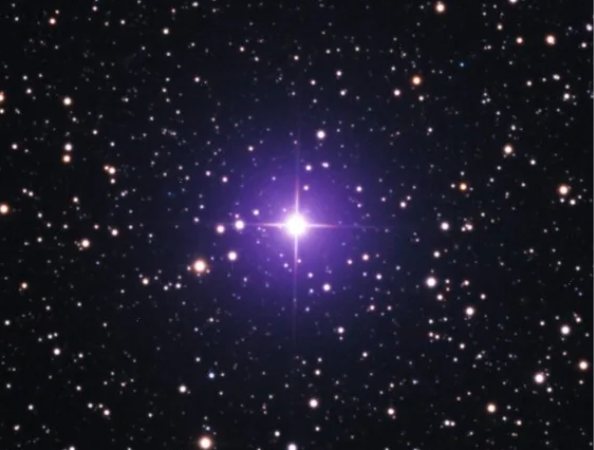Scientists validate method for weighing ancient stars using their seismic waves

An international team of astronomers, with the participation of the Instituto de Astrofísica de Canarias (IAC), validated a method for measuring the mass of ancient stars through the analysis of their seismic waves.
The breakthrough is considered key to more precisely determining the age of stars and deepening our understanding of the evolution of the Milky Way.
The study, published in the journal Astronomy and Astrophysics , focused on a red giant star in the binary system KIC 10001167.
For the first time , the mass of a star was estimated using two independent methods —asteroseismology and orbital dynamics—whose results coincide within a difference of less than 1.4%, reinforcing the reliability of both techniques.
Two methods for the same result The team used, on the one hand, an analysis of the binary system's orbit by observing variations in the star's brightness and radial velocity. On the other hand, they studied its internal oscillations using asteroseismology, a technique that allows vibrations on the stellar surface to be detected, compared with theoretical models, and physical properties such as mass to be derived.
Observations of brightness variations were made using data collected by the Kepler satellite, while radial velocity measurements were obtained with the Nordic Optical Telescope (NOT), located at the Roque de los Muchachos Observatory in La Palma.

For the first time, the mass of an ancient star has been measured using asteroseismology. Photo: iStock
David Jones, an IAC researcher and co-author of the study, emphasized that "orbital mechanics is a powerful tool for measuring stellar masses," thanks to its well-established foundations dating back to the 17th century by Johannes Kepler and Isaac Newton.
For his part, Jeppe Sinkbaek Thomsen, lead author of the article and a PhD candidate at the University of Bologna, emphasized that “ for the first time we can say that the mass of an ancient star, derived using asteroseismology, is in agreement, within 1%, with the mass measured by its orbit.”
Implications for galactic astrophysics The validation of asteroseismology as an accurate method for measuring stellar mass represents a decisive step for modern astronomy.
According to researchers , this technique will allow for a more accurate determination of the age of stars, an essential variable for reconstructing the history of the formation and evolution of the Milky Way.

Researchers were able to calculate the star's age with an accuracy of 10%. Photo: Eliot Herman
In the case of KIC 10001167, the agreement between the two estimates allowed its age to be calculated with an accuracy of 10%, a margin considered remarkable for this type of study.
The IAC concludes that this breakthrough opens up new possibilities for using asteroseismology in broader population studies, which will contribute to a more detailed understanding of the structure and history of our Galaxy.
More news in EL TIEMPO *This content was rewritten with the assistance of artificial intelligence, based on information from EFE, and reviewed by the journalist and an editor.
eltiempo




